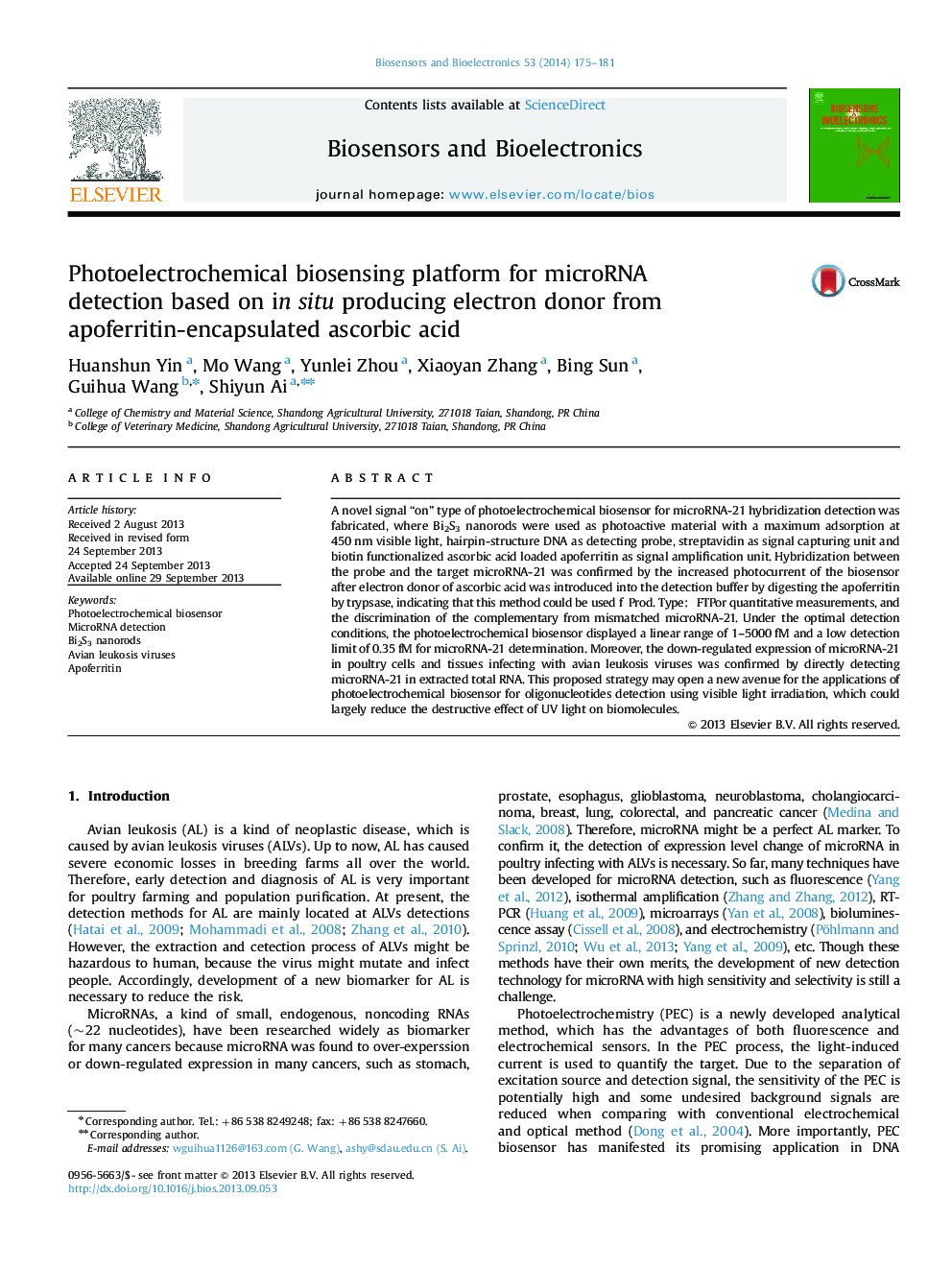| کد مقاله | کد نشریه | سال انتشار | مقاله انگلیسی | نسخه تمام متن |
|---|---|---|---|---|
| 866688 | 1470978 | 2014 | 7 صفحه PDF | دانلود رایگان |

• A signal-on photoelectrochemical biosensor was fabricated for microRNA detection.
• Bi2S3 were used as photoactive material and ascorbic acid used as electron donor.
• Ascorbic acid was released from biotin functionalized AA loaded apoferritin.
• The developed method could directly detect microRNA-21 in extracted total RNA.
A novel signal “on” type of photoelectrochemical biosensor for microRNA-21 hybridization detection was fabricated, where Bi2S3 nanorods were used as photoactive material with a maximum adsorption at 450 nm visible light, hairpin-structure DNA as detecting probe, streptavidin as signal capturing unit and biotin functionalized ascorbic acid loaded apoferritin as signal amplification unit. Hybridization between the probe and the target microRNA-21 was confirmed by the increased photocurrent of the biosensor after electron donor of ascorbic acid was introduced into the detection buffer by digesting the apoferritin by trypsase, indicating that this method could be used fProd. Type: FTPor quantitative measurements, and the discrimination of the complementary from mismatched microRNA-21. Under the optimal detection conditions, the photoelectrochemical biosensor displayed a linear range of 1–5000 fM and a low detection limit of 0.35 fM for microRNA-21 determination. Moreover, the down-regulated expression of microRNA-21 in poultry cells and tissues infecting with avian leukosis viruses was confirmed by directly detecting microRNA-21 in extracted total RNA. This proposed strategy may open a new avenue for the applications of photoelectrochemical biosensor for oligonucleotides detection using visible light irradiation, which could largely reduce the destructive effect of UV light on biomolecules.
Journal: Biosensors and Bioelectronics - Volume 53, 15 March 2014, Pages 175–181